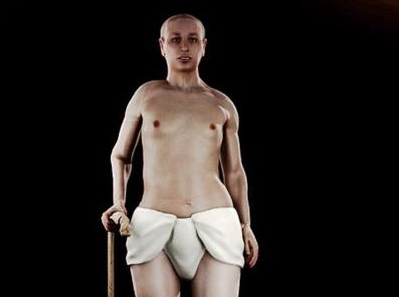King Tut’s 'Feminine Hips' Revealed: Pharaoh Suffered Several Afflictions Because His Parents Were Brother And Sister

Scientists have finally revealed the human face behind King Tutankhamun’s world-famous gold masks, and it paints a sad tale of incest, deformation, and a lifetime of physical suffering. King Tut has, in a way, lived up to his immortal reputation by continuing to live in human imagination centuries after his death. In a new TV documentary, we will finally be able to tell fact from fiction in the legendary story of the young Egyptian prince.
In the documentary, "Tutankhamun: The Truth Uncovered," airing on Sunday, we learn that King Tut had a club foot, feminine hips, and a pronounced overbite, Raw Story reported. Further testing also revealed that he had Kohler’s disease, a rare genetic disorder that caused him to lose bones in his foot. The condition would have caused him excruciating pain throughout his lifetime Ashraf Selim, an Egyptian radiologist explained to the International Business Times. This would explain why Egyptian history spoke of King Tut using a walking stick to move and why he was reputed to remain seated while shooting an arrow.
King Tut’s long list of ailments isn’t the result of an ancient Egyptian curse. The researchers were able to point out a more scientific culprit: incest. Albert Zink, scientific director of the Institute for Mummies and the Iceman in Italy used genetic fingerprinting and tests on mitochondrial DNA to determine that King Tut’s parents were, without a shadow of a doubt, brother and sister.
TUT UGLY http://t.co/7TcuRV0VAu pic.twitter.com/6eT3Bs0WnD
— Jessica Roy (@JessicaKRoy) October 20, 2014The finding was not as surprising as one would believe. It was common practice in royal families throughout the world to marry close relatives in order to keep the bloodline pure. Unfortunately, these families had no way of knowing that health complications would arise from such close breeding. According to Psychology Today, the chances of a newborn child who is the product of brother-sister relations suffering early death, a severe birth defect, or some mental deficiency is around 50 percent.
Inbreeding’s high rate of health problems is caused by recessive genes. Unlike most genes attributed to our beauty, strength, and intellect, recessive genes are more likely to cause diseases and deformities. Luckily, these recessive genes must be given by both parents to become expressed, but in instances where close relatives have children the likelihood of these genes being expressed significantly increases.
According to io9, we are all carriers of these potentially harmful genes, but because the genes are so rare, it’s highly unlikely that a random reproductive partner will happen to carry the same genes as us, unless this partner shares some family relation. In King Tut's case, the Kohler’s disease he was diagnosed with was due to this same unfortunate pairing of recessive genes.
There is one mystery left unsolved, and it’s perhaps the greatest mystery of all: How did King Tut die? Earlier theories have suggested that King Tut died from a chariot crash or had been murdered by jealous rival. With the addition of these new genetic clues, researchers are now wondering if the root of the famed monarch’s demise was none other than an inherited ailment caused by an undiversified family tree.
Correction: The article has been amended to correctly reflect how long King Tut has been dead.



























